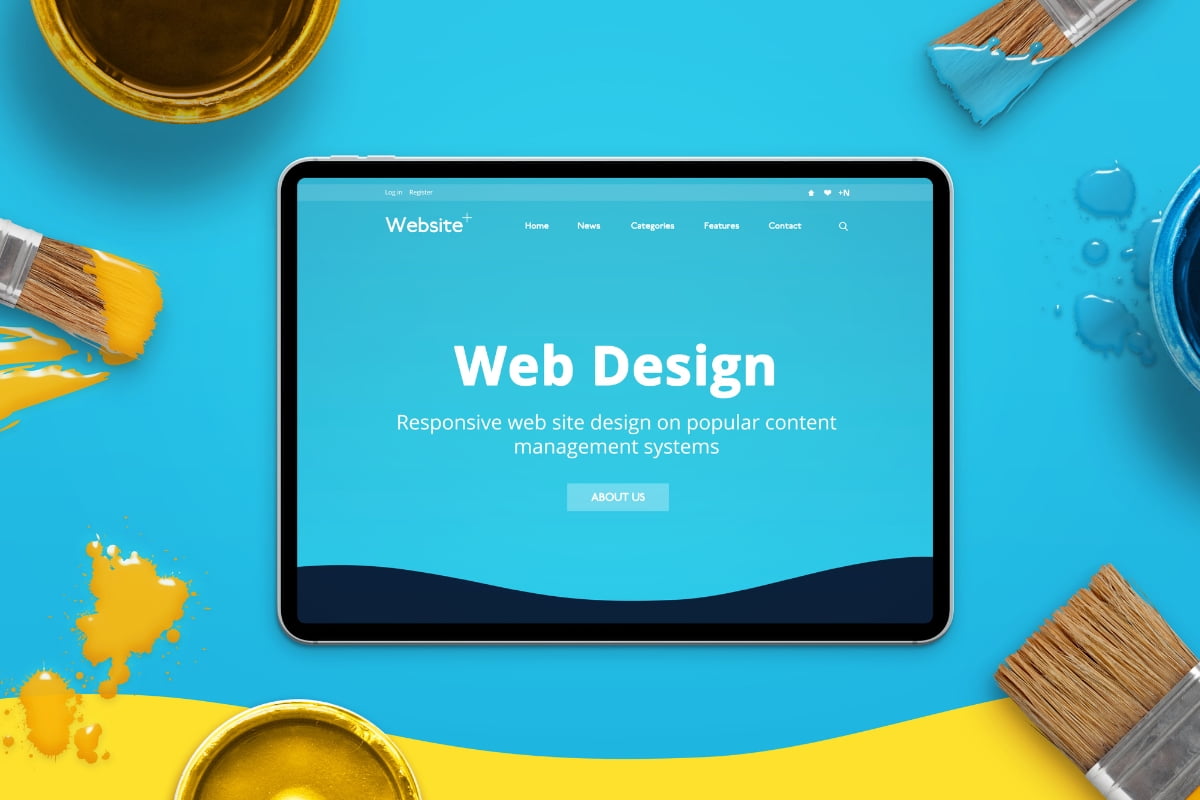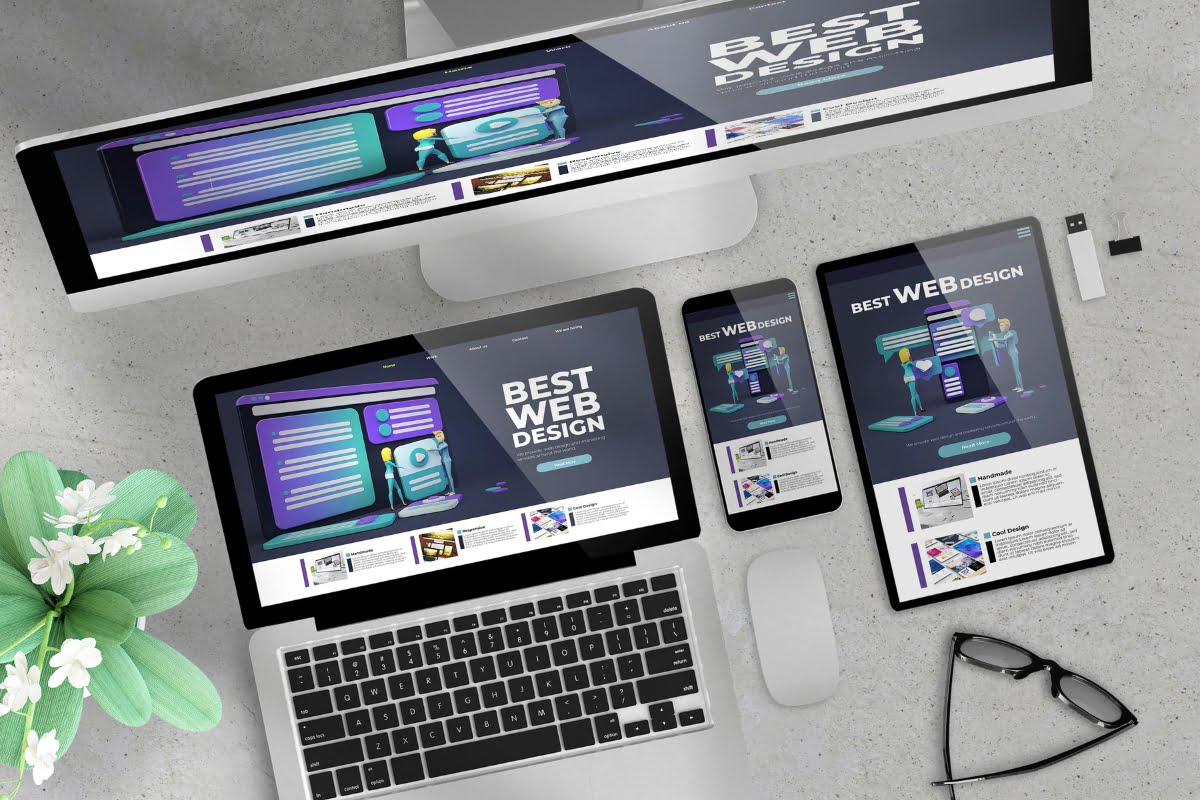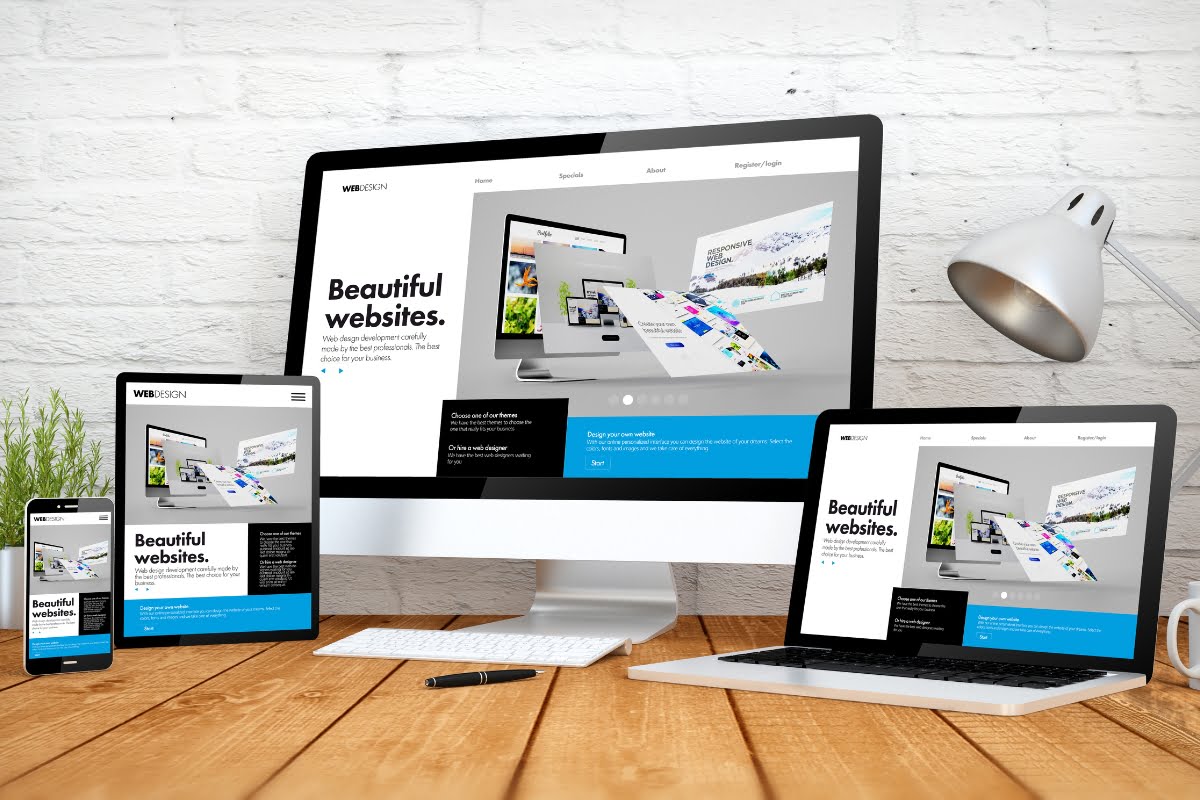Imagine visiting a website and being unable to navigate it, read its content, or interact with its features. Frustrating, isn’t it? Unfortunately, this is a reality for millions of people around the world who have disabilities and face barriers when accessing online information.
But here’s the thing: web content accessibility guidelines exist to ensure that everyone, regardless of their abilities, can fully engage with and enjoy a website’s content. In our digital age, where websites have become the primary platform for communication, commerce, and entertainment, it is crucial that we prioritize inclusivity and make our online spaces accessible to all.
This is where the web content accessibility guidelines come into play – they hold the key to unlocking a more inclusive online experience for everyone. But what exactly are these guidelines, and how can we decode them for success?
In this comprehensive guide, we will delve deep into the world of web content accessibility guidelines and unravel the secrets behind making your website accessible to all.
Empowering Users: Discover the Impact of Web Content Accessibility
The Importance of Accessibility in Web Design

Web design plays a crucial role in making digital content accessible to everyone. It is not only about creating visually appealing websites but also about ensuring that individuals with disabilities can access and navigate them effortlessly. The importance of accessibility in web design cannot be overstated.
One of the key aspects of web accessibility is adhering to web content accessibility guidelines (WCAG). These guidelines provide a set of standards and recommendations to make websites accessible to people with disabilities. By following these guidelines, web designers can ensure that their websites are inclusive and provide equal access to all users.
Web content accessibility guidelines cover various aspects of web design, including visual, auditory, and cognitive accessibility. They address issues such as color contrast, font size, alternative text for images, captioning for videos, and keyboard accessibility. By implementing these guidelines, designers can create websites that are easily navigable by individuals with disabilities.
The importance of following web content accessibility guidelines goes beyond just compliance. It is about creating an inclusive online environment where everyone can access and interact with digital content without any barriers. When a website is accessible, it opens up opportunities for people with disabilities and empowers them to fully participate in the digital world.
Moreover, web accessibility is not limited to individuals with disabilities. It also benefits a wider audience, including the elderly and those with temporary impairments or situational limitations. For instance, individuals with low vision may rely on screen readers or magnification tools, while those with mobility impairments may navigate websites using keyboards or assistive devices. By considering these needs during the design process, web designers can create a user-friendly experience for all users.
In addition to the moral and ethical reasons for accessibility, there are legal obligations as well. Many countries have implemented accessibility laws that require websites to be accessible to individuals with disabilities. Non-compliance can result in legal consequences, including lawsuits and fines. Therefore, it is essential for businesses and website owners to prioritize accessibility in their web design practices.
Understanding Web Content Accessibility Guidelines (WCAG)

Web content accessibility guidelines (WCAG) are a set of standards that provide guidance on how to make web content more accessible for people with disabilities. These guidelines are essential for ensuring that individuals with various disabilities can access and understand the information presented on websites. In this blog post, we will decode WCAG and discuss how they can contribute to the success of your website.
WCAG was developed by the World Wide Web Consortium (W3C) with the goal of making the internet more inclusive for everyone. These guidelines provide a framework for web designers and developers to create websites that are accessible to individuals with disabilities, such as visual impairments, hearing impairments, and cognitive disabilities.
One of the key principles of WCAG is perceivability. This means that web content should be presented in a way that can be perceived by all users, regardless of their abilities. For example, providing alternative text for images allows screen readers to describe the image to visually impaired users, while adding captions to videos ensures that deaf or hard-of-hearing individuals can understand the content.
Another important principle is operability. This means that web content should be easy to navigate and interact with. WCAG recommends providing clear and consistent navigation menus, ensuring that keyboard-only users can easily navigate through the website. It also advises against using flashing or moving content that could cause seizures in individuals with photosensitive epilepsy.
WCAG also emphasizes the importance of understandability. Web content should be presented in a clear and concise manner, using plain language that is easy to comprehend. This is particularly crucial for individuals with cognitive disabilities who may have difficulty processing complex information.
Finally, WCAG addresses robustness, which ensures that web content can be interpreted by a wide range of devices and assistive technologies. By following these guidelines, web developers can ensure that their websites are compatible with different browsers, screen readers, and other assistive technologies.
Key Principles of Web Content Accessibility Guidelines

Web Content Accessibility Guidelines (WCAG) are a set of principles and standards that aim to ensure that websites and web content are accessible to all users, including those with disabilities. These guidelines provide a framework for designers, developers, and content creators to follow, in order to make their websites more inclusive and usable for everyone.
- Perceivable: The first principle of WCAG is making web content perceivable. This means that all information and user interface components must be presented in a way that users can perceive them using their senses, such as sight and hearing. It includes providing alternatives for non-text content, ensuring that text is readable and understandable, and giving users control over time-based media.
- Operable: The second principle focuses on making web content operable. It means that users should be able to navigate and interact with the website using various input methods, such as a keyboard or voice commands. This principle emphasizes the importance of providing clear and consistent navigation, allowing users enough time to read and interact with content, and ensuring that interactive elements are easy to use and understand.
- Understandable: The third principle is about making web content understandable. Users should be able to comprehend the information and operation of the website. This principle encourages the use of clear and simple language, providing instructions and prompts that are easy to follow, and helping users avoid and correct mistakes.
- Robust: The final principle focuses on ensuring that web content is robust and compatible with different assistive technologies. It means that websites should be designed and developed using technologies that are widely supported and can be interpreted by different user agents, including screen readers, braille devices, and speech recognition software. This principle emphasizes the importance of using valid and accessible markup, avoiding deprecated features, and providing fallback options for unsupported technologies.
By following these key principles of WCAG, website owners and developers can create websites that are accessible to all users, regardless of their abilities or disabilities. Implementing these guidelines not only makes websites more inclusive, but also improves user experience and helps businesses reach a wider audience. So, if you want to ensure the success of your website, make sure to adhere to the web content accessibility guidelines.
Common Challenges and Solutions in Implementing Accessibility

Implementing accessibility on websites and digital platforms is crucial for ensuring inclusivity and equal access for all users. However, it can also present several challenges that need to be addressed. We will explore some common challenges faced during the implementation of web content accessibility guidelines and provide effective solutions to overcome them.
Lack of Awareness: One of the biggest challenges in implementing accessibility is the lack of awareness or understanding of web content accessibility guidelines. Many organizations and website owners are not familiar with the guidelines or the importance of making their digital content accessible to all.
Solution: The first step is to educate stakeholders about the significance of accessibility and the benefits it provides. Conducting workshops, training sessions, or webinars can help raise awareness and equip individuals with the knowledge needed to implement accessibility standards effectively.
Complex Technical Requirements: Accessibility guidelines can sometimes be complex and difficult to understand, especially for those without technical expertise. This poses a challenge when it comes to implementing the guidelines correctly.
Solution: Simplify the technical requirements by breaking them down into manageable steps. Provide clear instructions and examples to help developers and content creators understand and implement the guidelines effectively.
Legacy Systems and Inaccessible Content: Many websites and digital platforms have been developed without considering accessibility standards. Upgrading or retrofitting these legacy systems to meet accessibility requirements can be a significant challenge.
Solution: Conduct a thorough accessibility audit of the existing systems to identify areas that need improvement. Prioritize the most critical issues and develop an action plan to gradually address accessibility concerns. Providing alternative accessible options for inaccessible content, such as captions for videos or text alternatives for images, can also help enhance accessibility.
Limited Resources: Limited budget, time, and resources can hinder the successful implementation of accessibility guidelines. Organizations may struggle to allocate sufficient resources or prioritize accessibility alongside other development tasks.
Solution: Highlight the legal, ethical, and business advantages of accessibility to gain buy-in from stakeholders. Allocate dedicated resources, both financial and human, for accessibility efforts. Integrating accessibility into the development process from the beginning rather than treating it as an afterthought can also help save time and resources in the long run.
Lack of User Feedback: Without proper feedback from users with disabilities, it can be challenging to identify and address accessibility issues effectively.
Solution: Engage with users with disabilities through user testing and feedback sessions. Incorporate their suggestions and insights to continuously improve accessibility and address any usability issues.
Testing and Evaluating Website Accessibility

Testing and evaluating website accessibility involves assessing various aspects of your website to determine if it meets the required standards. It is a proactive approach that helps you identify and rectify any accessibility issues before they become barriers for users with disabilities. It also ensures compliance with legal requirements, such as the Americans with Disabilities Act (ADA) and the Web Content Accessibility Guidelines (WCAG).
To begin with, you can conduct an automated accessibility test using tools like WAVE or WebAIM. These tools analyze your website’s HTML and CSS code to identify common accessibility issues such as missing alt text for images, improper use of headings, or insufficient color contrast. While automated testing can provide a quick overview of potential issues, it is important to remember that not all accessibility barriers can be detected by automated tools.
To delve deeper into website accessibility, manual testing is necessary. This involves using assistive technologies like screen readers, keyboard navigation, and voice recognition software to navigate and interact with your website.
By experiencing your website as users with disabilities would, you can identify any usability or accessibility challenges that may arise. Manual testing is especially important for evaluating dynamic content, such as forms or interactive elements.
In addition to testing, evaluating website accessibility also involves considering user feedback and conducting usability studies. By gathering input from users with disabilities, you can gain valuable insights into their experiences and identify areas for improvement. Usability studies involve observing users as they interact with your website and noting any difficulties or frustrations they encounter.
It is important to iterate and refine your website based on the findings from testing and evaluation. Implementing accessibility best practices, such as providing alternative text for images, using proper heading structure, and ensuring keyboard accessibility, can greatly improve the overall user experience for individuals with disabilities.
The Benefits of Creating Accessible Websites

Creating accessible websites has numerous benefits for both businesses and users. By adhering to web content accessibility guidelines, businesses can ensure that their websites are inclusive, user-friendly, and compliant with legal requirements. Let’s explore some of the key benefits of creating accessible websites.
Enhanced User Experience
Creating accessible websites improves the overall user experience for all users, including those with disabilities. By incorporating features such as alternative text for images, clear navigation, and readable font sizes, websites become more user-friendly and easier to navigate. This not only benefits individuals with disabilities but also improves the overall usability for all users, leading to increased engagement and satisfaction.
Increased Reach and Accessibility
Accessible websites enable businesses to reach a wider audience. Approximately 15% of the world’s population, or about 1 billion people, live with some form of disability. By making websites accessible, businesses can tap into this market and ensure that their products, services, and information are accessible to all individuals, regardless of their abilities. This inclusivity promotes equal access to information and opportunities.
Compliance with Legal Requirements
Creating accessible websites is not just good practice; it is also a legal requirement in many countries. Web content accessibility guidelines provide a framework for businesses to ensure their websites meet the necessary accessibility standards. By complying with these guidelines, businesses can avoid potential legal issues and ensure equal access to their online content.
Improved SEO and Search Rankings
Accessible websites often perform better in search engine rankings. Search engines value websites that are user-friendly, well-structured, and provide a positive user experience.
By implementing accessibility features, websites become more crawlable, readable, and indexable by search engines, resulting in improved search engine optimization (SEO) and increased visibility in search results.
Positive Brand Image and Reputation
Creating accessible websites demonstrates a commitment to inclusivity and social responsibility. By providing equal access to all users, businesses can enhance their brand image and reputation. In an increasingly socially conscious world, consumers are more likely to support businesses that prioritize accessibility and inclusivity. This can lead to increased customer loyalty, positive word-of-mouth, and improved brand perception.
Conclusion: Embracing a Digitally Inclusive Future
As we move towards a more digitally-driven world, it is essential to embrace a digitally inclusive future. By ensuring that web content accessibility guidelines are decoded for success, we can create a more inclusive online environment for all users.
Web content accessibility guidelines serve as a roadmap for making web content accessible to individuals with disabilities. These guidelines cover a wide range of accessibility requirements, including visual, auditory, and cognitive impairments. By adhering to these guidelines, websites can provide equal access and opportunities for all users.
By adhering to these guidelines, websites can create a more accessible and inclusive online environment. From ensuring perceivable content to providing operable and understandable features, every aspect plays a crucial role in making the web accessible to all. Let us work towards a future where no one is left behind in the digital realm.
At Newman Web Solutions, we recognize the transformative potential of automated marketing and are more than ready to assist you in harnessing this powerful tool. Ready to enhance your marketing strategy with automated campaigns?
Schedule a free 30-minute strategy consultation with us through our website form, or simply give us a call at (404) 301-9189 today. Partner with us to level up your marketing campaigns today! Don’t miss out on this opportunity to revolutionize your marketing efforts; embrace the power of automated campaigns now!





